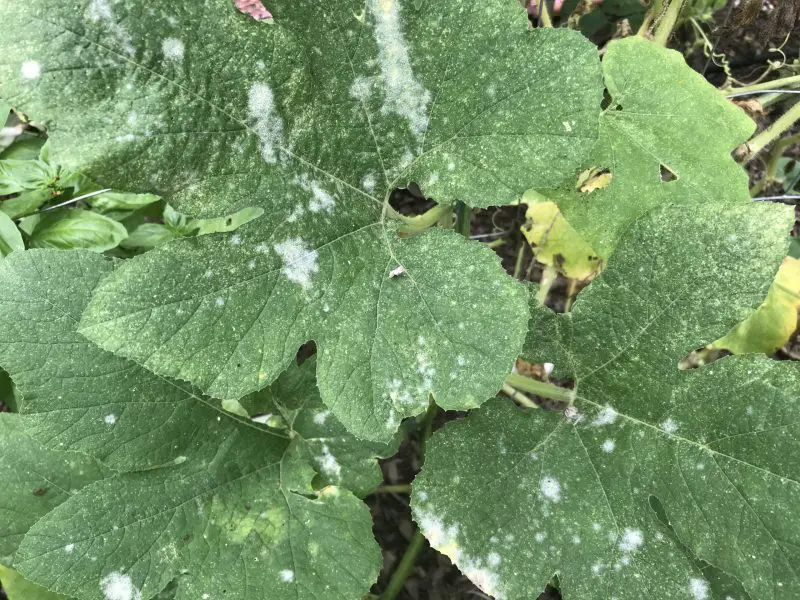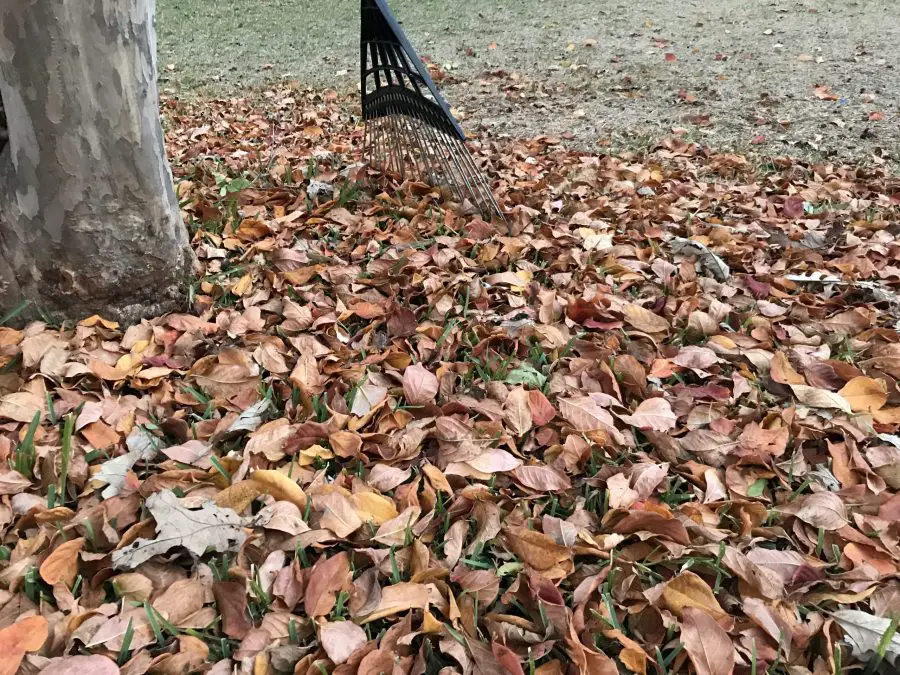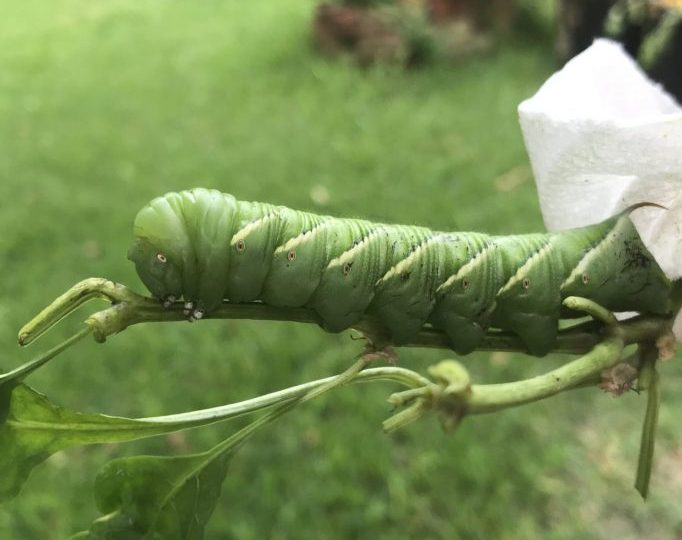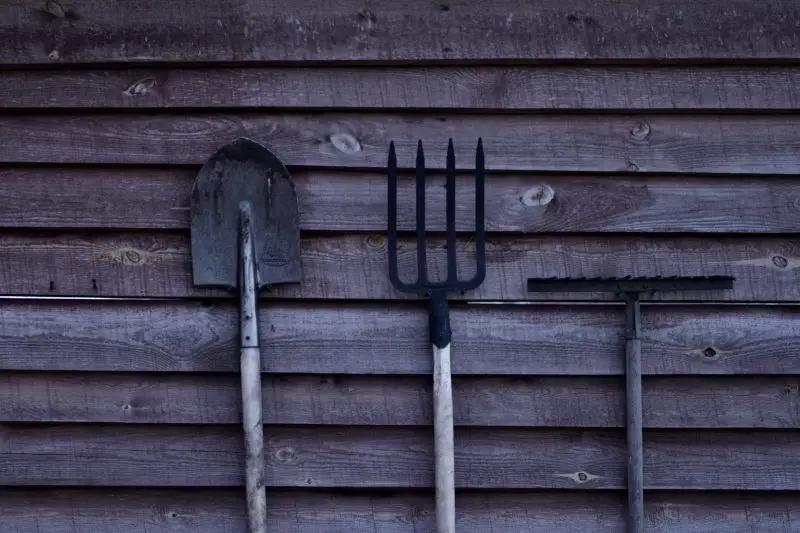It’s July, and it has been raining abundantly in Austin, central Texas. As a result, many gardeners notice white spots on summer crops such as squash, cucumbers, and zinnias. Most likely, that is powdery mildew. Unfortunately, it is a fungal disease that spreads rapidly, turning the garden into an ugly mess. Fortunately, there are ways to deal with powdery mildew in the garden without stress.
Why does powdery mildew occur?
Powdery mildew is a fungal disease that thrives in a humid and warm environment. It begins as white spots on the leaf, which then become covered with a whitish powder. This powder is, in fact, the fungal spores. As the disease progresses, the spores become more abundant and spread throughout the host plant and its neighbors.
The spores are carried by wind or direct contact. Once they land on a susceptible plant, they multiply if the conditions are right. Although powdery mildew develops on dry foliage, the surrounding humid and warm air is the main factor in its survival.
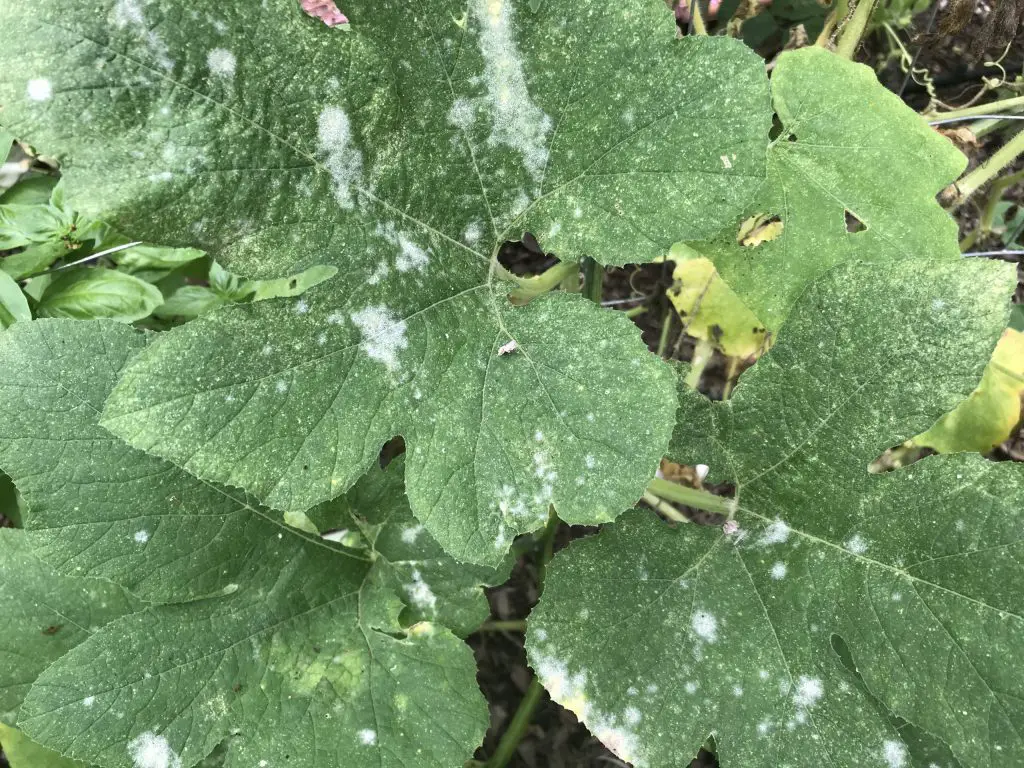
There is a wide variety of mildew species, and each infects only a particular family of plants. Experiencing the disease regularly in the garden may indicate the presence of spores in the soil. They can stay dormant in old vegetation and/or weeds to wake up when conditions are right.
Contrary to what most think, mildew does not do well in hot weather. Instead, it thrives in cool to warm regions with high air humidity. It also favors shaded and low-light areas.
How to identify powdery mildew?
It is important to pay attention to the garden and notice any changes in a plant. Here is a list of some things you may notice on a plant when it is infected with powdery mildew:
- Common host plants are cucumbers, squashes, calendula, zinnias, peppers, eggplants, and tomatoes. Of course, there are other plants, but these are the most common in the kitchen garden.
- White blurry spots on the top side of the leaf in its early stages.
- A powdery substance covering the leaf at an advanced stage.
Note that some squash plants have natural white streaks or spots, which may confuse you with mildew.
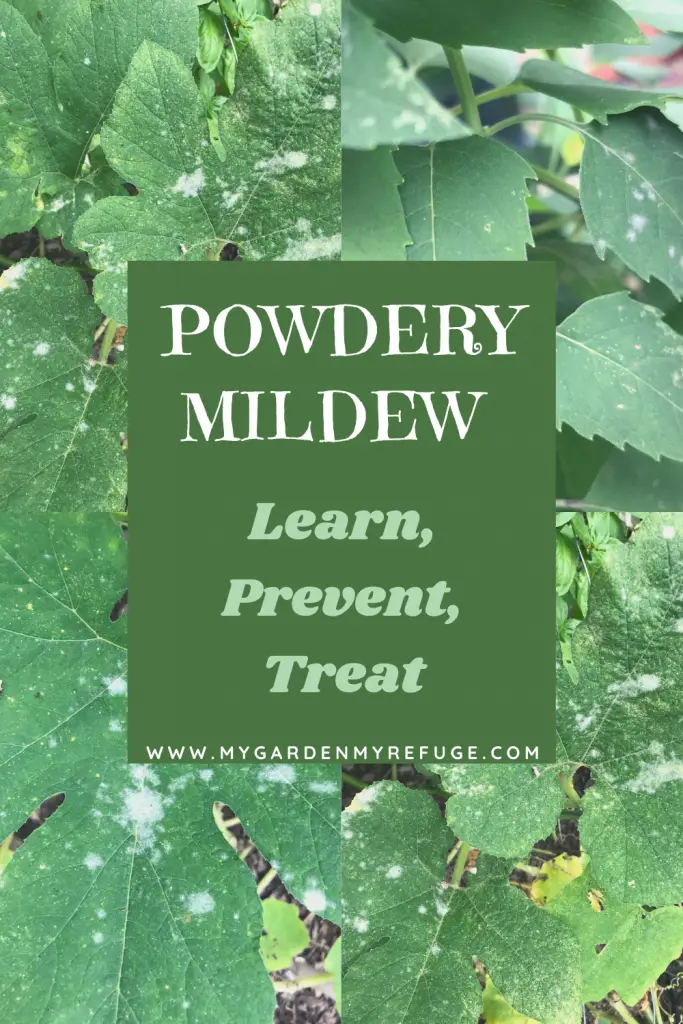
How to treat powdery mildew?
The best treatment of diseases or pests is prevention and early detection.
Ways to prevent powdery mildew in the garden
- Plant disease-resistant varieties to eliminate the disease.
- Since fungi thrive in shady, moist areas, try to plant in sunny spots.
- Apply proper spacing techniques to avoid overcrowding to ensure good air circulation and decrease humidity around the foliage.
- Prune affected foliage regularly to prevent the spread of the disease.
- Sometimes overhead watering can help since it disturbs the existing spores on the leaf and discourages reproduction.
- Keep the garden clean from plant debris and discard sick plants properly.
How to control powdery mildew?
There are some easy homemade remedies to treat powdery mildew. However, it is crucial to start the application as soon as you notice the disease. If you wait too long, treatment may not be as effective, so starting over with a new plant is best.
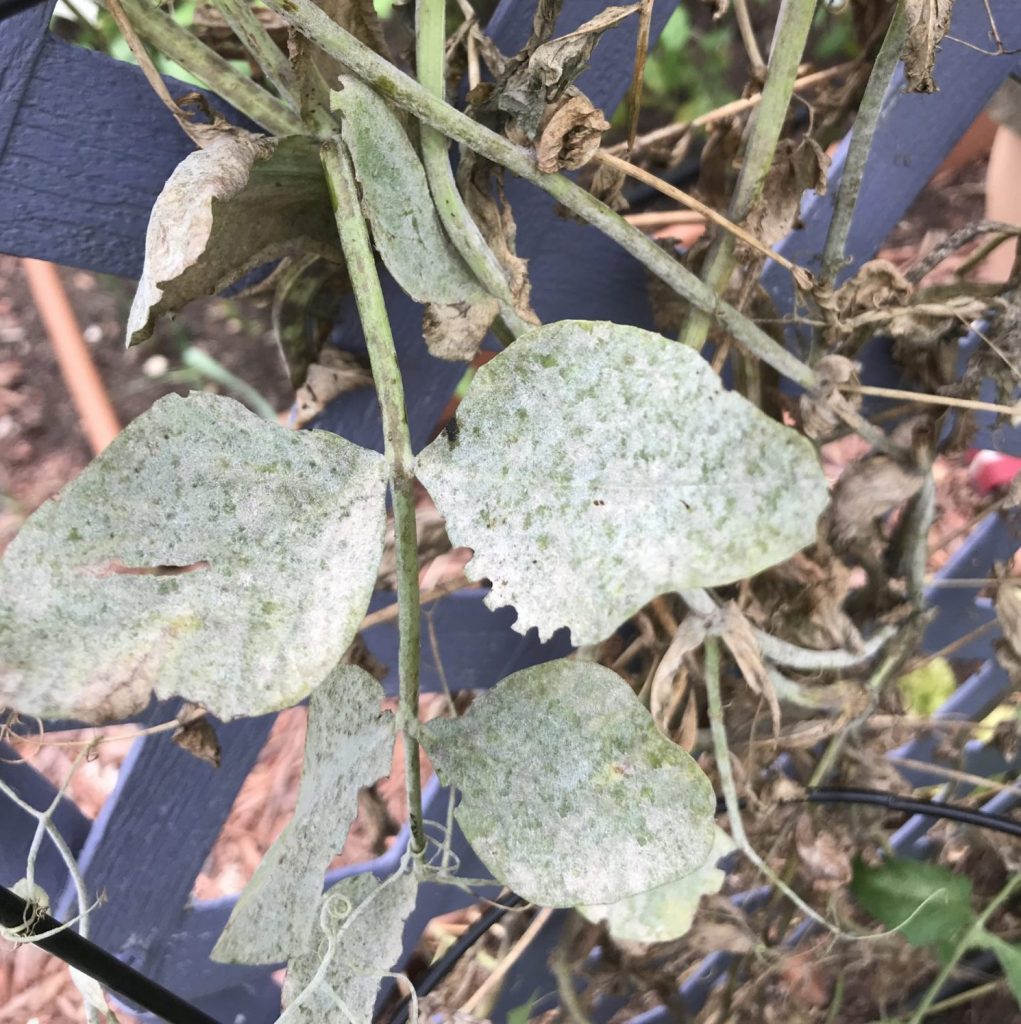
Milk spray for powdery mildew
Many experimental studies worldwide found that milk spray is just as good as any synthetic fungicide in treating powdery mildew. For example, in Canada, milk was effective on tomato powdery mildew. New Zealanders used it on apple trees.
There is no definite explanation of how milk works on mildew. However, one theory suggests that milk proteins become antiseptic when in contact with the sun, halting spores’ growth.
Some gardeners recommend using spoiled milk, but that is not necessary. Milk particles will spoil anyway under the heat of the sun. As for the concentration ratio of milk to water, again, there is no consensus on it. The lowest concentration is 1:9 milk to water, and the highest is 40:60. You may experiment with it until you find the right one for your plants.
It is best to use milk spray as a preventative. If you are used to seeing mildew in your garden, start spraying the concerned plant before the disease takes hold of it.
Hydrogen Peroxide spray for powder mildew
Hydrogen peroxide is a household staple for cleaning and getting rid of mold. It is also used in the garden to boost plants’ health and treat powdery mildew. Diluting one part of 3% hydrogen peroxide in 9 parts of water seems to work well on early infection. Apply the solution once every one or two weeks for better control.
Baking soda spray for powdery mildew
Baking soda is another home remedy for powdery mildew. It is, in fact, the most commonly used. Dissolve one teaspoon of soda in one quart of water, then spray thoroughly on the affected plant weekly.
Commercial Fungicide for powdery mildew
There are plenty of commercially available fungicides to use on powdery mildew. They mostly contain lime sulfur, sulfur, and neem oil. For your safety, always read the label carefully before applying.
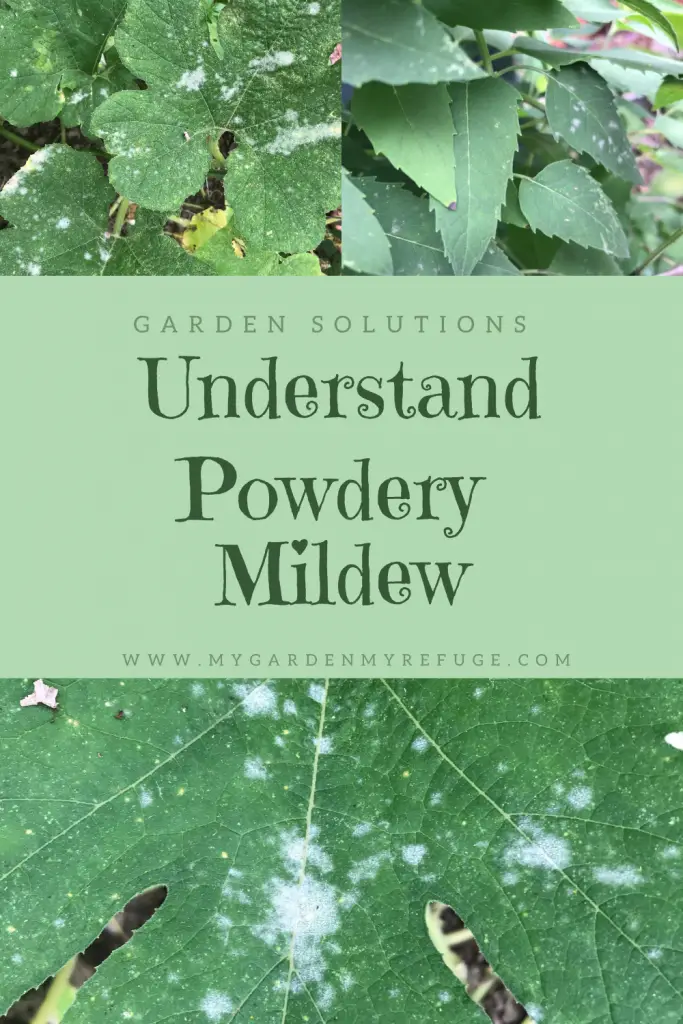
Could powdery mildew destroy the garden?
Luckily, powdery mildew is a host-specific fungus. That means there is a specific mildew type for each plant family. For example, the mildew that affects zinnias does affect cucumbers. However, a mildew infection weakens susceptible plants and reduces their yield.
When mildew affects the leaves, it blocks light from reaching them, inhibiting photosynthesis and preventing the plant from making food. Gradually, the plant weakens and becomes an easy target for other problems leading to its death.
Is powdery mildew dangerous to humans?
Inhaling powdery mildew can affect people with respiratory problems, as is consuming affected plants. If you grow herbal teas, avoid using leaves presenting mildew infection. Discard all diseased plants in the trash and do not compost them. Apply sound judgment when handling mildew-affected plants, and use proper protection if necessary.
What plants are susceptible to powdery mildew?
Powdery mildew can affect thousands of plants, including perennials, annuals, and even grasses. Some of the common plants are:
